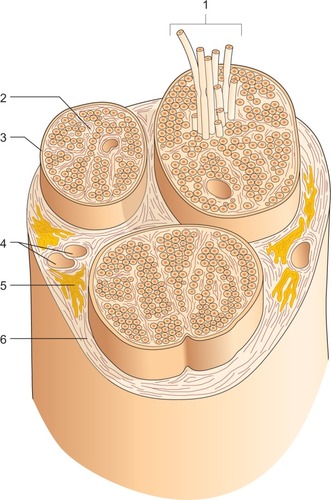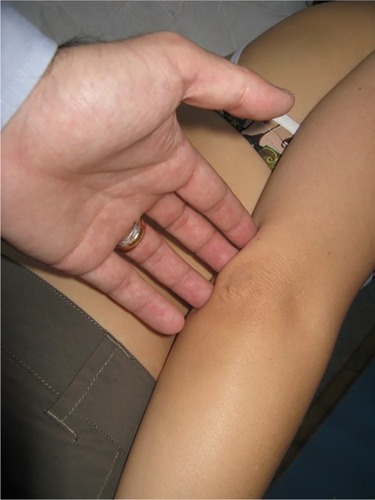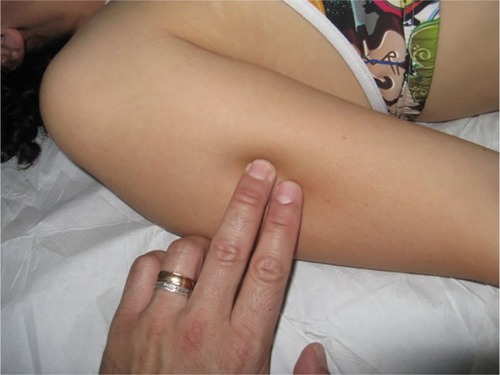Figures & data
Figure 1 Constitution of a nerve in transverse section.

Figure 2 Location of the median and ulnar nerves in the region of the palm.
Notes: 1: The ulnar nerve; 2: the transverse carpal ligament; 3: deep palmar branch of the hand; 4: anastomosis between the median nerve and ulnar nerve; 5: digital nerves; 6: the median nerve. Reproduced with permission from Anastasi et al. AA VV, Anatomia dell’Uomo [Human Anatomy]. 4th ed. Milan: Edi. Ermes. Italian.Citation30 Copyright 2010 Edi. Ermes, Milano.
![Figure 2 Location of the median and ulnar nerves in the region of the palm.Notes: 1: The ulnar nerve; 2: the transverse carpal ligament; 3: deep palmar branch of the hand; 4: anastomosis between the median nerve and ulnar nerve; 5: digital nerves; 6: the median nerve. Reproduced with permission from Anastasi et al. AA VV, Anatomia dell’Uomo [Human Anatomy]. 4th ed. Milan: Edi. Ermes. Italian.Citation30 Copyright 2010 Edi. Ermes, Milano.](/cms/asset/5a532bd0-ccc1-4579-b434-4ce89c0e1162/djpr_a_89393_f0002_c.jpg)
Figure 3 Fascial treatment of the ulnar nerve in the peripheral nervous system.

Figure 4 Fascial treatment of the radial nerve in the peripheral nervous system.

